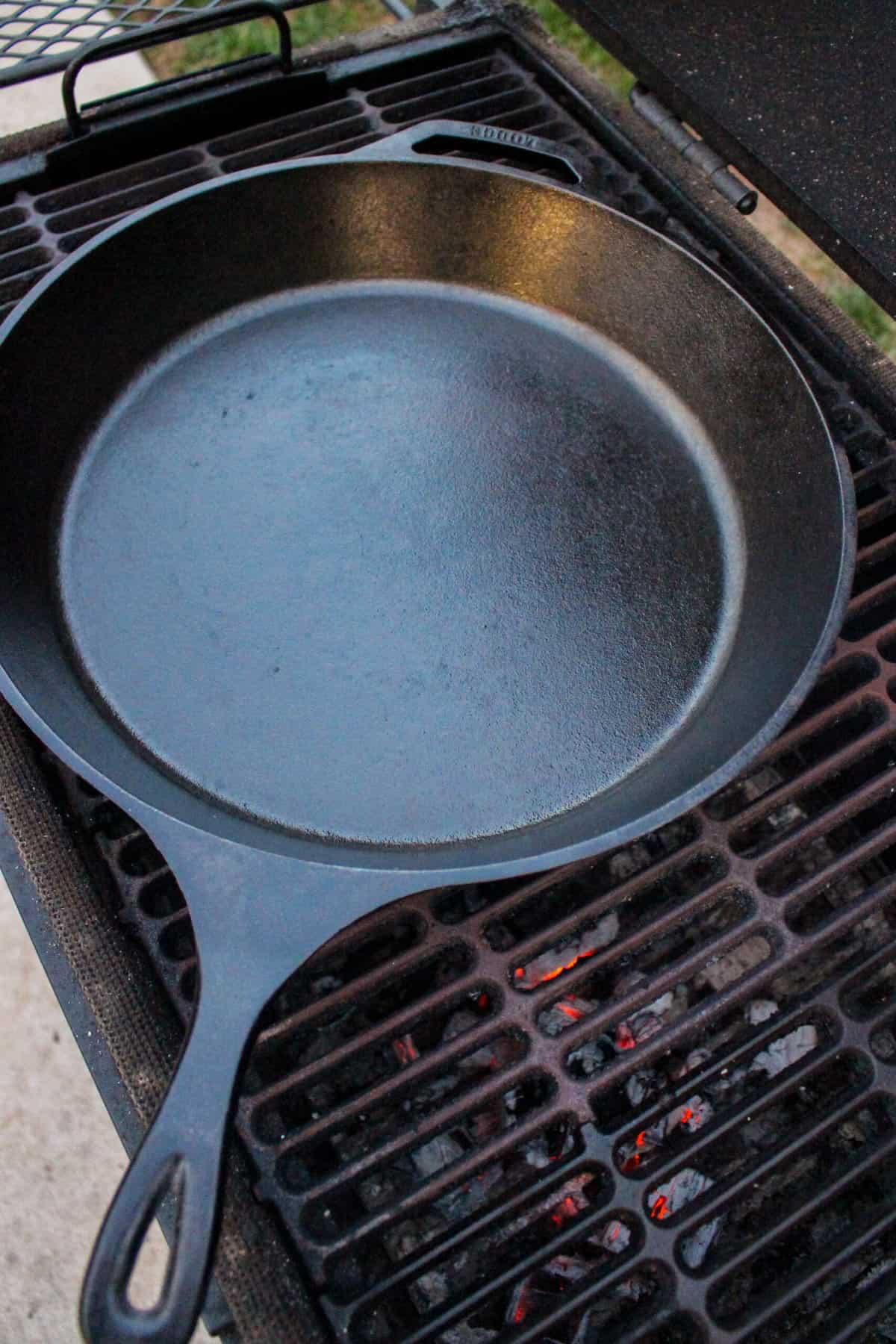
What does it mean to Season or Re-Season a Cast Iron Skillet? Well, let me tell you. When a cast iron skillet is manufactured, they are light grey in color and have a bumpy/rough texture. Now, of course, we’re not talking super rough here. Think more like pores across the surface.
If you were to cook on a skillet straight off the manufacturing line, your food would stick to it like crazy. All those pores within the cast iron make for a large surface area that adheres to your food and… good luck breaking up that relationship.
The good news is that in today’s world, most cast iron cookware companies season their skillets before they’re sold, so you can use a new pan straight out of the box. It’s this “seasoning” process that helps the skillets develop a natural non-stick surface. This non-stick surface is something we want to improve/develop and maintain on a cast iron skillet, so let’s talk about how to take care of this type of cookware.
For some fun cast iron recipes, check out my Nashville Hot Cast Iron Salmon, Cast Iron American Lamb Chops and Cast Iron Green Chile Chicken Recipe.
What Does Seasoning or Re-Seasoning a Cast Iron Skillet Even Mean?
In short, seasoning cast iron is using cooking oil (or any fat) to fill in the pores of the skillet. Not only does this change the cast iron to the dark grey/black color we’re all familiar with, but it more importantly helps it release the food that we’re cooking. The goal is to allow these microscopic layers of oil to build up over time, therefore creating a smooth surface and BOOM… The pan becomes non-stick.
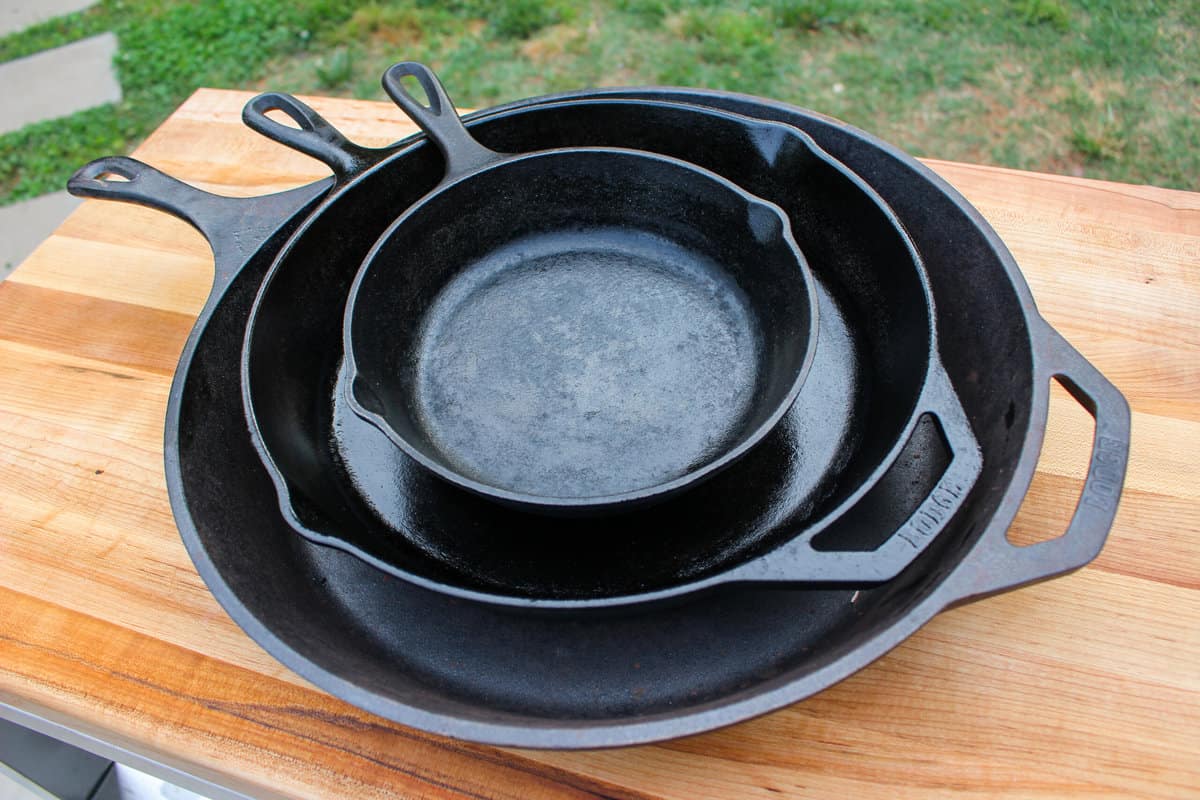
You might think I’m full of crap here. “Is there really such a thing as a non-stick cast iron skillet?!”
Yes. Yes, there is. I saw my grandma perfectly flip eggs in her cast iron skillet and my mind was blown…
The Science of Seasoning a Cast Iron Skillet
This is about to be your favorite recipe that I’ve ever posted. Why? Because seasoning only requires one ingredient: oil.
What is the best oil for seasoning cast iron, you might ask? Well, in all honesty, it’s up to you. Most will recommend using grapeseed oil, avocado or canola oil. These oils work well because they have a higher smoke point, which is good when cooking in high heat scenarios… like with fire.
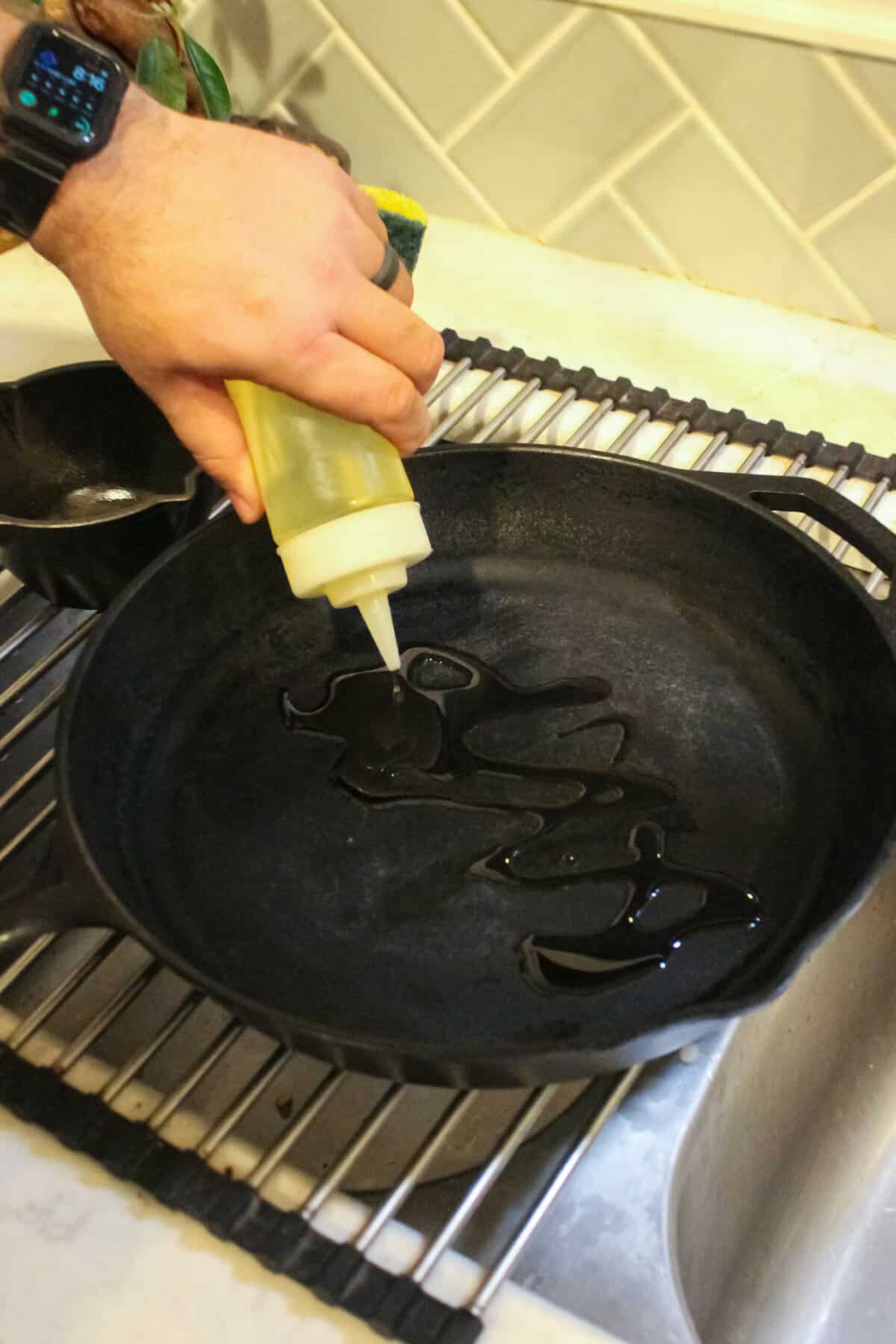
When an oil reaches its “smoke point” this cool process happens, called polymerization. Without getting too technical, think of this process as the singular molecules within the oil starting to string and bond together. This stringing and bonding together creates the coating within and over the pores of the cast iron, creating more of a smooth surface. It’s the build up of these layers that allow us to use cast iron without the food constantly sticking to it.
So, this matters because when we season or re-season a cast iron skillet it is important that we bake the skillet at a temperature where this polymerization process happens!
In a pinch, you could use vegetable oil, flaxseed oil, olive oil, or peanut oil, but you will have to do a bit more research about their smoke point and how it relates to seasoning cast-iron cookware.
As mentioned above, it’s likely that a new cast iron pan you bought at the store comes pre-seasoned. Check the packaging and/or instructions to verify whether it has an initial seasoning before using.
However, for the sake of education, let’s pretend that your skillet did not come seasoned. Or perhaps you just cleaned an old, rusty skillet that needs to be re-seasoned.
How To Season Cast Iron:
Prep
Clean & Dry the Skillet. Wipe your clean cast iron pan with a dry paper towel. You want the skillet to be clean and completely dry before starting the seasoning process.
If you need help cleaning your cast iron skillet, or have a rusty one you’re trying to restore, check out my Cleaning your Cast Iron Skillet article. Here, we dive into all those cleaning and restoring tips and tricks!
Coat in Oil. Use a clean paper towel or spray to coat your cast-iron pan with a thin layer of oil all over the entire pan, and I mean all over it– Inside, outside, frontside, backside, the handle, etc. absorbing any of the excess oil afterwards. Not only will this slicken our cooking surface, but it will also protect the entire skillet from rusting.

Bake
Preheat Oven & Bake. Place the cast iron skillet in your oven to bake. If you chose canola oil, who’s smoke point is 400 degrees Fahrenheit, then you want to preheat your oven to high heat, a minimum of 400F. I’d recommend 425-450F to ensure the skillet slightly surpasses that temperature throughout.
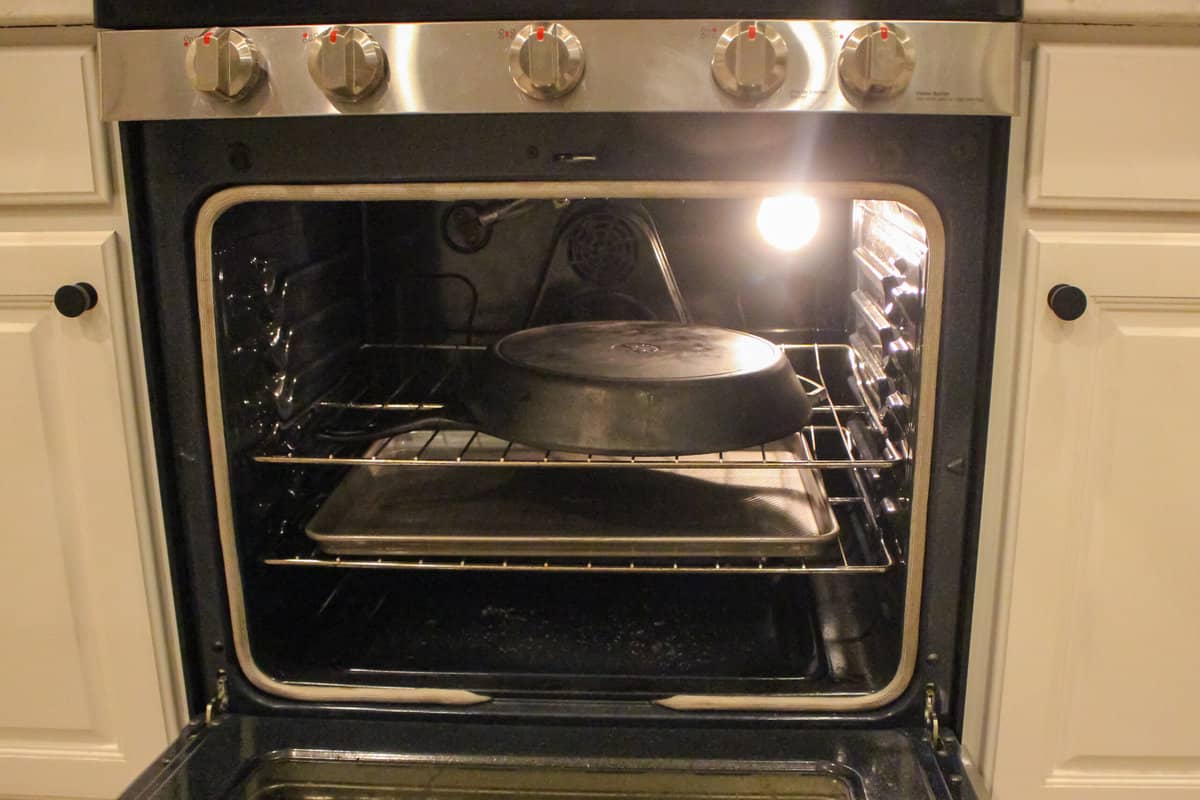
Wait 30 minutes to 1 hour. Let the cast iron skillet bake in the oven for 30 minutes to 1 hour. You will see some smoke radiate from the pan as the oil begins to polymerize. Once that smoke is gone, you know the polymerization process is complete. Now, this can sometimes be a smokey process, which is why it’s imperative to only use about a teaspoon of oil for the whole pan.
Last Steps
Repeat If Desired. Repeat the process of coating the cast iron skillet in a thin layer of oil and place it back in the oven. This adds another layer of seasoning to your skillet. You might need to do this if you’re restoring an old, previously rusted skillet. However, it is up to your discretion. If you feel the pan needs it, it won’t hurt to do another.
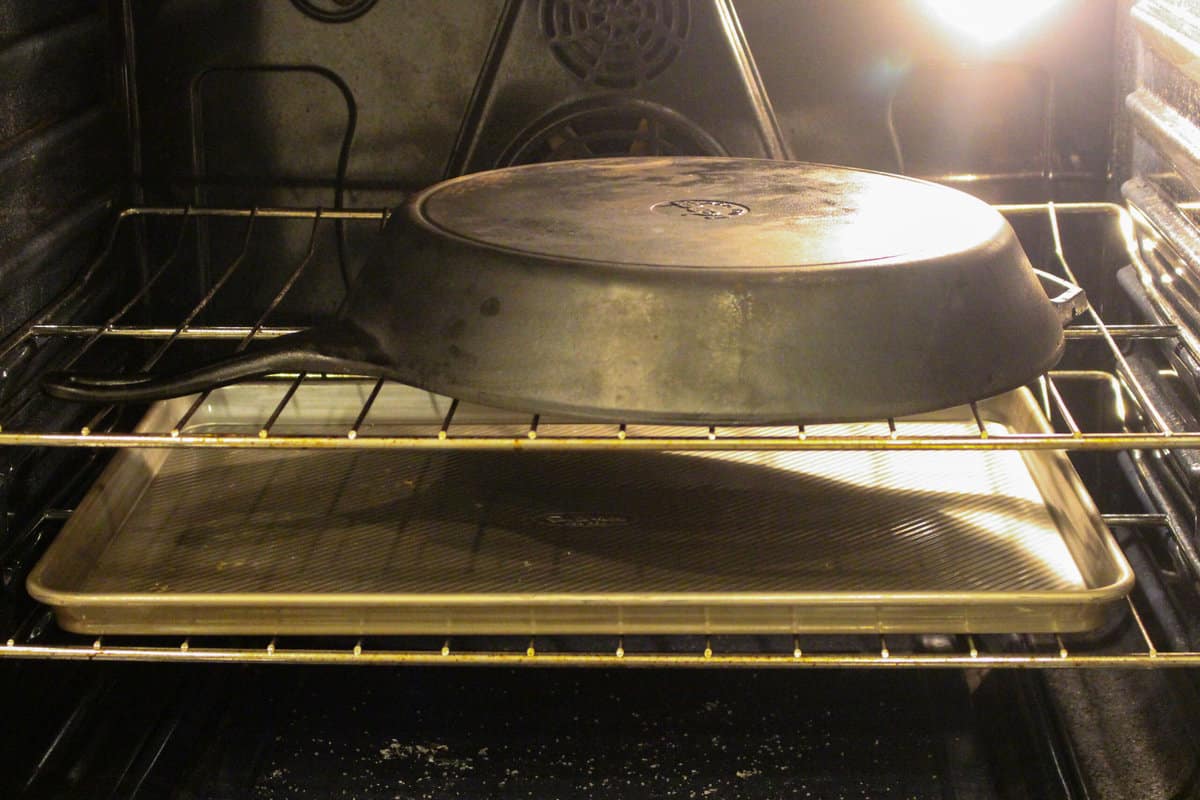
Slowly Cool. Once you’re finished, turn off the oven but leave the well-seasoned cast iron pan in the oven as it cools. Letting the pan cool slowly is a good idea because it helps solidify the layers of seasoning we just baked into it.
Final Thoughts on Seasoning Cast Iron Skillets
After Seasoning or Re-Seasoning a cast-iron skillet, it should last you a lifetime! I believe the best way to maintain good cast iron pans is simply to use them, because the more you use them, the more thin layers of fat and oil get cooked into the skillet. Therefore, the more non-stick they become. But even if you only use your well-seasoned skillet occasionally, it should keep its protective coating.
To learn more about cast iron care, check out my article about Cleaning Your Cast Iron Skillet.
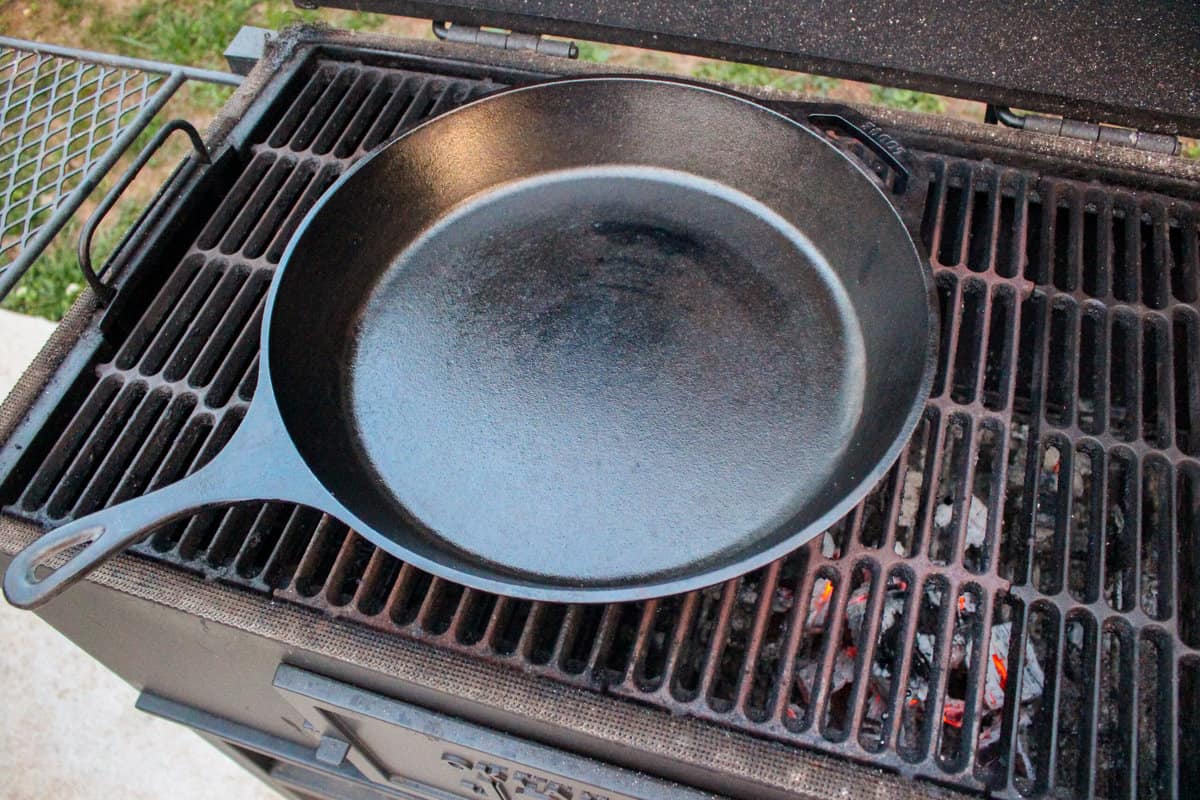
Check out some of my favorite cast iron skillet recipes like Skillet Choriqueso, Backyard Skillet Beer Brats, Grilled Steak Potato Wedges and Steakhouse Picanha.
For more delicious recipes, check out my second cookbook Flavor X Fire or my first cookbook Food X Fire!
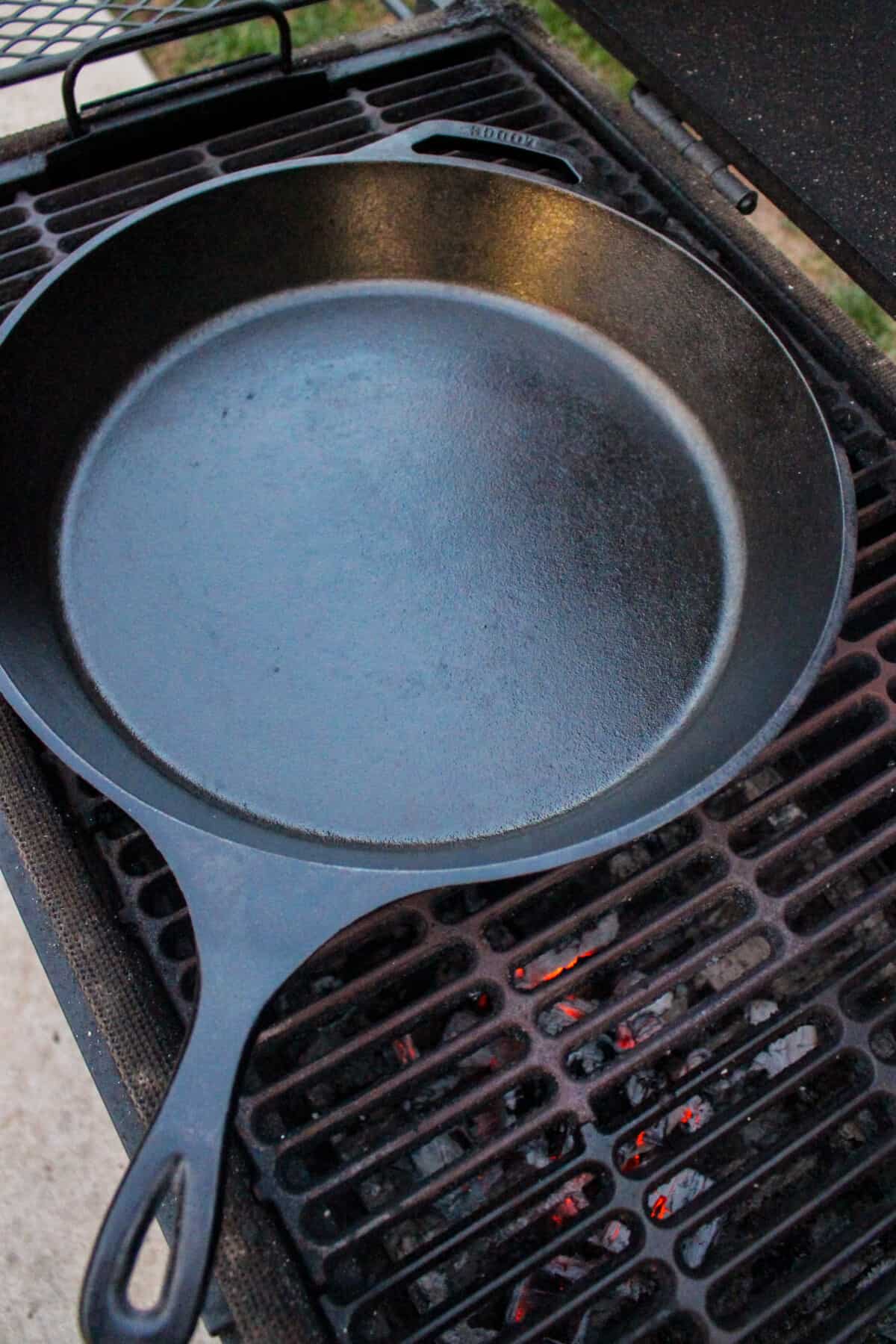
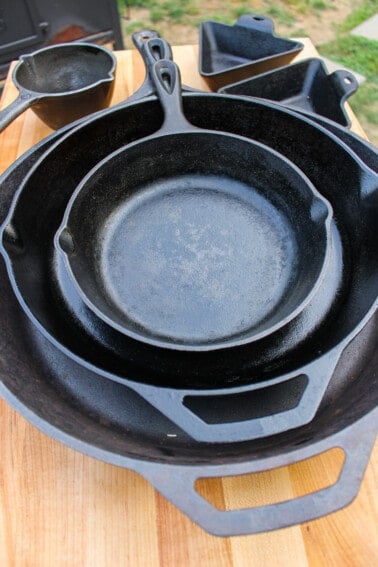
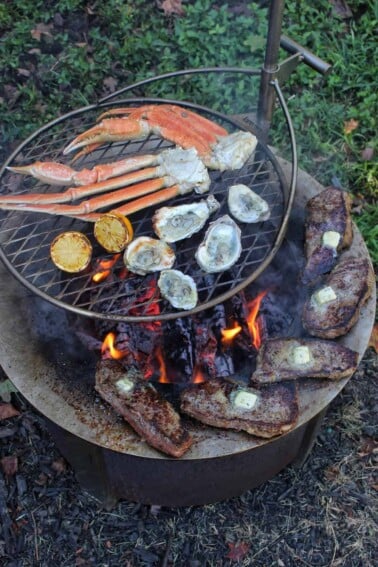
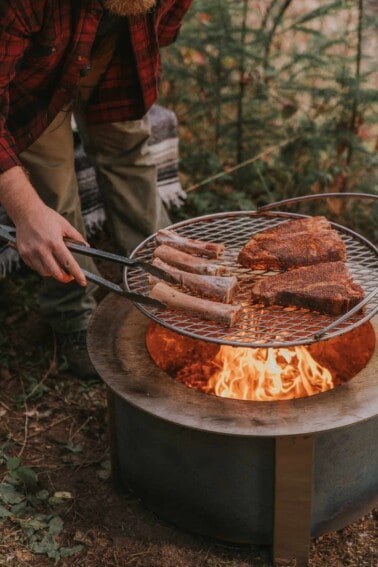
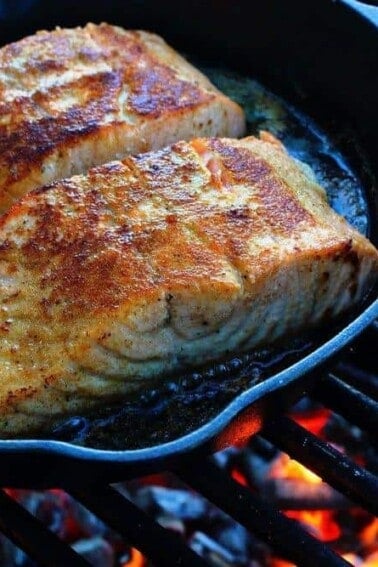









Fire cooking nothing but the best
Thanks, this will help me get ALL of my items cleaned.
I’m not sure if this was submitted the first time:
Excellent write-up!
I just finished 3 seasoning cycles on a couple of older cast iron skillets. They’re lookin’ good.
PS: I had our grill at about 450*F and discovered that our “Pampered Chef Grill Mitt” cannot handle that much heat.
Thank you for all the information on seasoning my skillet. I’ve looked at other sites, yours made the most sense! Your article was chalked full of easy to follow & understand information. Things I couldn’t find on all the other sites. So again thank you!!